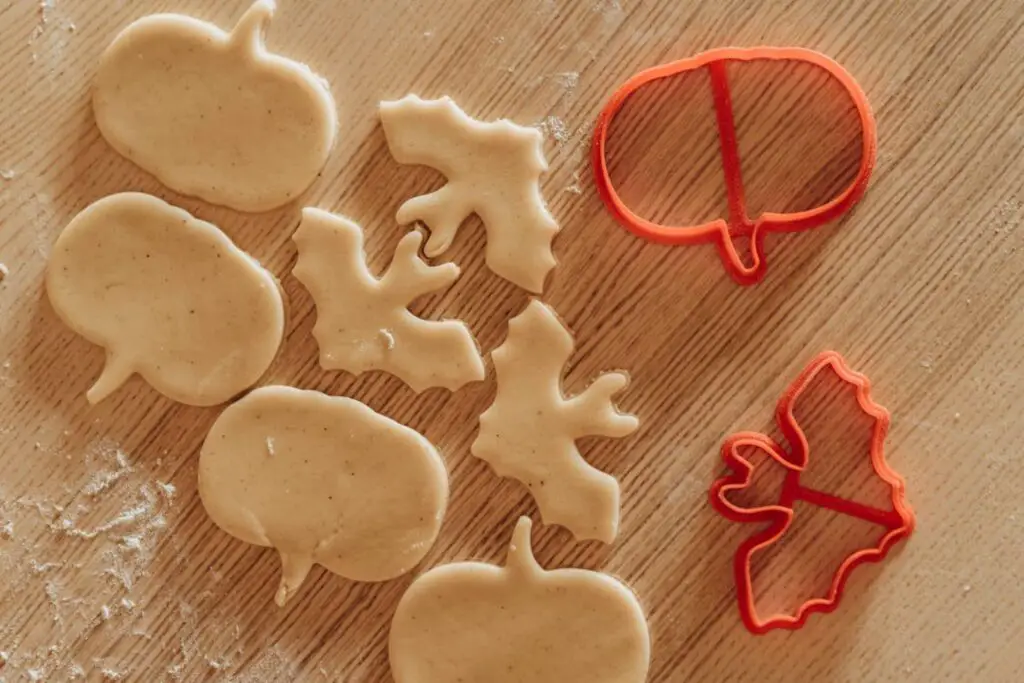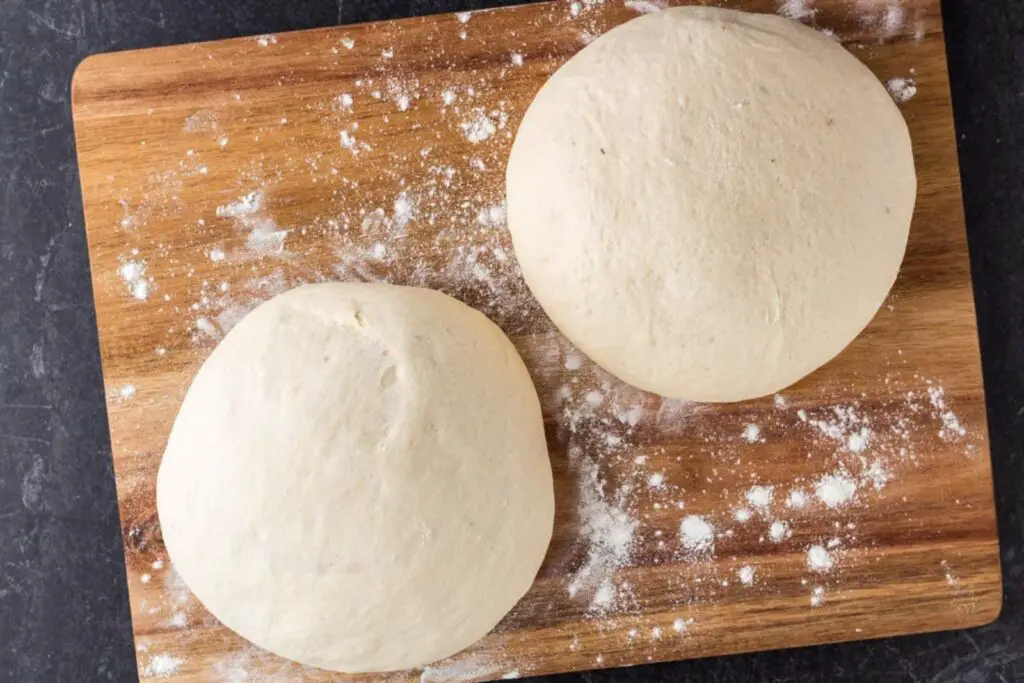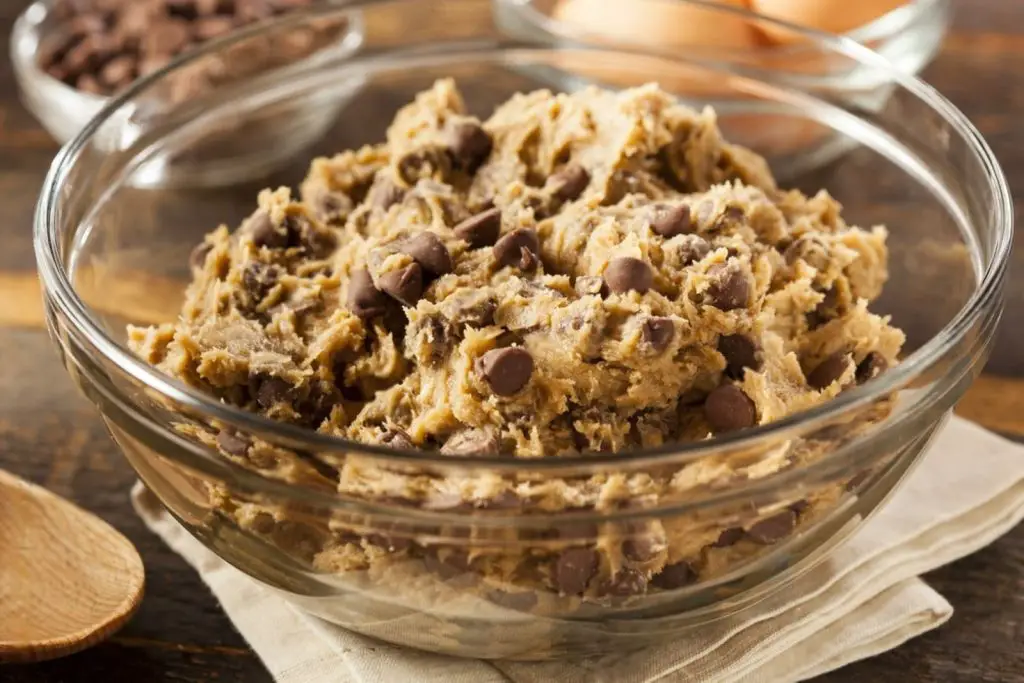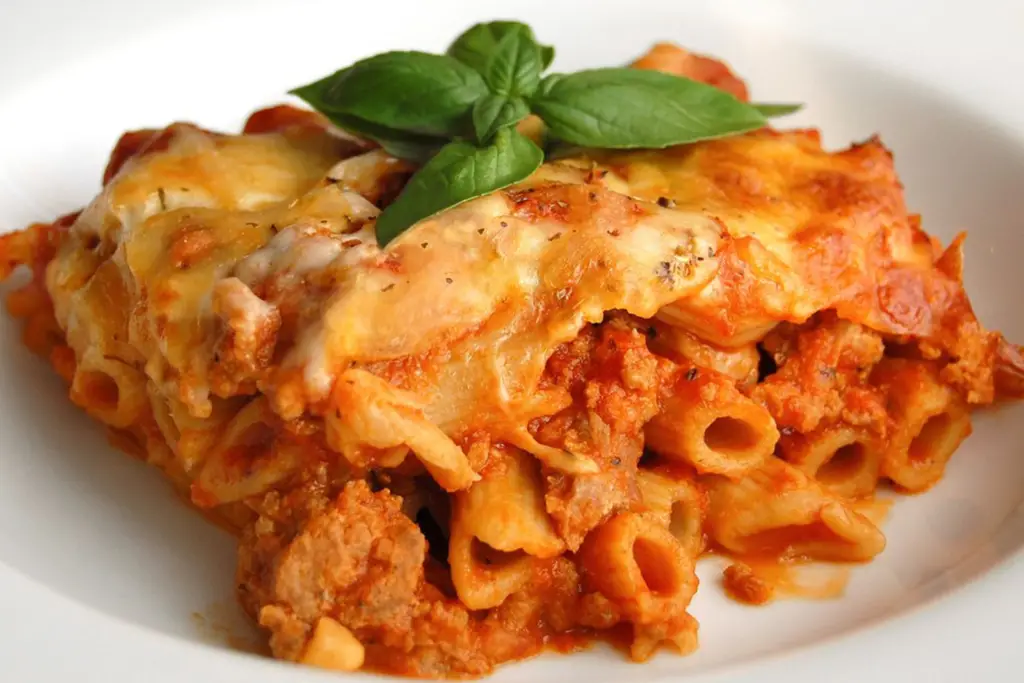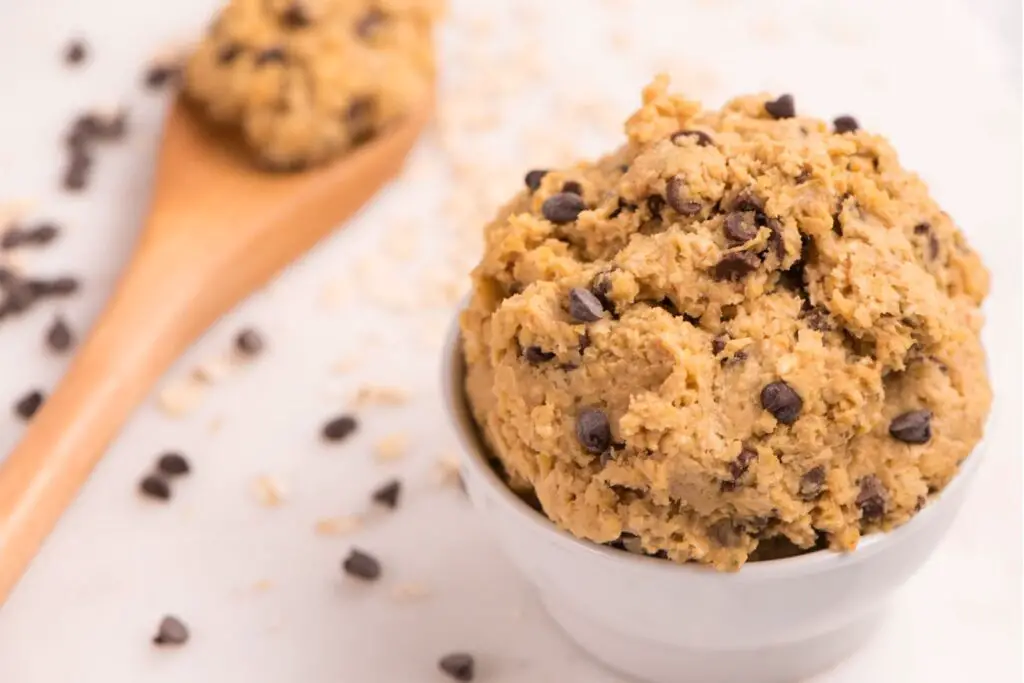
Zucchini muffins, a delightful fusion of wholesome ingredients and subtle sweetness, embody the joy of baking with garden-fresh produce. Combining grated zucchini, flour, eggs, and a touch of spices or sweeteners, these muffins offer a moist texture and a delightful flavor profile that appeals to both young and old. The incorporation of zucchini not only adds a nutritional boost but also lends a tender crumb to each muffin. However, when baking a batch of zucchini muffins or enjoying the bounty of your garden harvest, it can be a challenge to consume them all before they start to lose their moisture and taste.
Freezing zucchini muffins emerges as a practical and efficient way to preserve their homemade goodness and culinary charm, ensuring that each muffin retains its moistness and delectable taste, ready to elevate your breakfasts or snack times with the essence of perfectly frozen zucchini muffins, even when freshly baked treats aren’t readily available or when you crave a taste of homemade comfort at your convenience. In this guide, we will explore the best practices for freezing zucchini muffins, allowing you to savor the richness of these wholesome creations and elevate your culinary experiences with the essence of perfectly frozen muffins, without the need for continuous baking efforts or concerns about freshness.
Here are the simple steps to freeze zucchini muffins:
Step 1: Bake and Cool the Muffins
Embarking on the journey to freeze your zucchini muffins begins with the creation of these delectable treats. Follow these important steps to ensure the muffins are prepared correctly for the freezing process:
- Baking the Muffins: The first task is to bake a batch of zucchini muffins using your preferred recipe. Zucchini muffins are beloved for their moistness and delightful flavor, courtesy of the grated zucchini. As you mix the batter, the zucchini blends harmoniously with other ingredients, creating a delectable combination of sweetness and a hint of earthiness.
- Recipe Choice: Whether you’re following a cherished family recipe or trying out a new one, make sure to pay attention to measurements and instructions. The ratio of zucchini to other ingredients can affect the muffins’ texture and flavor. A well-crafted recipe will guide you through the steps to create muffins that are both scrumptious and freezer-friendly.
- Baked to Perfection: Keep a watchful eye on the muffins as they bake in the oven. The right baking time is essential to achieve that golden-brown hue on the top and a firm yet moist crumb on the inside. Properly baked zucchini muffins have a slightly springy texture when gently pressed.
- Cooling on a Wire Rack: Once you’ve achieved the desired level of doneness, carefully remove the muffins from the oven. Place them on a wire rack, allowing air to circulate around the muffins. This is a crucial step for preventing condensation from forming inside the packaging later on.
- Preventing Moisture: Allowing the muffins to cool completely on a wire rack serves a dual purpose. It not only prevents moisture from building up inside the muffins due to trapped steam but also ensures that the muffins’ texture remains intact. If the muffins are packed while warm, trapped moisture could cause them to become soggy during freezing and thawing.
- Room Temperature Cooling: The cooling process should take place at room temperature. Avoid placing the hot muffins in the refrigerator, as the rapid temperature change could result in the formation of excess moisture on the surface of the muffins.
Step 2: Wrap Individually
The process of freezing zucchini muffins involves a crucial step to safeguard their texture and flavor. Individually wrapping each muffin is a key strategy to prevent freezer burn and preserve the muffins’ quality during storage. Here’s why this step is essential:
- Protection from Freezer Burn: Freezer burn is a common concern when freezing baked goods. It occurs when the surface of the food becomes dehydrated due to exposure to cold air, resulting in dry and discolored patches. By wrapping each zucchini muffin individually, you create a barrier that helps prevent direct contact with the freezer air, significantly reducing the risk of freezer burn.
- Maintaining Freshness: Zucchini muffins are cherished for their moist and tender crumb. Individual wrapping acts as a shield, preserving the muffins’ moisture content and preventing them from becoming excessively dry during freezing. This step ensures that when you eventually thaw and enjoy your muffins, they retain their delightful texture and flavor.
- Flexible Wrapping Options: The choice between plastic wrap and resealable plastic bags offers flexibility. Plastic wrap conforms closely to the muffin’s shape, providing a snug layer of protection. On the other hand, placing the muffins in resealable plastic bags is another effective option, especially if you plan to freeze multiple muffins together.
- Avoiding Stickiness: Zucchini muffins can be quite moist, and without proper wrapping, they might stick together during freezing. Individually wrapping each muffin prevents this issue, allowing you to easily take out the desired number of muffins without any hassle.
- Easy Portion Control: Individually wrapped muffins offer excellent portion control. You can take out as many muffins as needed without thawing the entire batch, which is especially useful if you’re preparing snacks or treats for different occasions.
Step 3: Arrange in a Freezer-Friendly Container
Once your zucchini muffins are individually wrapped to perfection, it’s time to transition to the freezer. However, how you organize and arrange them within the freezer plays a pivotal role in maintaining their quality. Here’s why using a freezer-friendly container or resealable plastic bag and arranging the muffins in a single layer is crucial:
- Preventing Damage: Placing the wrapped muffins in a freezer-friendly container or bag provides an extra layer of protection. It shields the muffins from potential physical damage, such as getting crushed or bumped, which could compromise their shape and texture.
- Barrier Against Odors: Freezers can sometimes carry strong odors from various foods stored within. A container or resealable bag acts as a barrier, preventing the muffins from absorbing unwanted flavors or odors that might affect their taste.
- Convenience and Organization: Storing the muffins in a single layer ensures that they freeze uniformly and reduces the risk of sticking together. This organization makes it easier to retrieve muffins individually without having to defrost the entire batch.
- Optimal Use of Space: When arranging the muffins in a single layer, you’re optimizing the use of freezer space. This layout prevents overcrowding and allows cold air to circulate around each muffin, promoting even freezing and minimizing the chance of uneven freezing.
- Uniform Thawing: Properly arranging the muffins prevents them from freezing together, which can result in uneven thawing. When you’re ready to enjoy a muffin, you won’t have to defrost the entire batch; you can remove just one or a few muffins as needed.
- Easy Inventory Management: If you choose to label and date your freezer-friendly container or resealable bag, it becomes easier to keep track of your frozen treats. This simple step ensures you’re aware of when the muffins were frozen, allowing you to prioritize them for consumption accordingly.
Step 4: Remove Excess Air
When using resealable plastic bags to store your individually wrapped zucchini muffins, a seemingly simple step can make a significant difference in preserving their quality. Removing excess air from the bags before sealing them offers several benefits, all of which contribute to maintaining the taste and texture of your frozen muffins:
- Preventing Freezer Burn: Excess air trapped within the bag can create pockets of cold air that contribute to freezer burn. Freezer burn occurs when moisture within the food evaporates, crystallizes on the surface, and forms ice crystals. By minimizing the air within the bag, you reduce the risk of these ice crystals forming on your muffins, helping to prevent freezer burn.
- Maintaining Freshness: The presence of air can lead to oxidation, causing the muffins to become stale or develop off-flavors over time. Removing excess air helps create a controlled environment within the bag, preserving the muffins’ freshness and taste.
- Maximizing Storage Space: Bags with excess air tend to take up more space in the freezer. By squeezing out the air, you’re optimizing the available space and ensuring that your muffins are stored more efficiently.
- Uniform Freezing: Air pockets can create uneven freezing and potentially cause freezer burn in specific areas. Removing air ensures that the muffins freeze evenly, preserving their overall texture and taste.
- Easy Packaging Inspection: When the bag is properly sealed after removing excess air, you can visually inspect it for any potential leaks or tears. This step ensures that your muffins are securely stored and won’t be exposed to freezer air.
- Longer Shelf Life: By taking this extra step to remove excess air, you’re enhancing the muffins’ overall shelf life in the freezer. This means you can enjoy your homemade treats without worrying about a loss in quality.
To remove excess air from a resealable plastic bag, gently press the bag as you seal it, starting from one end and working your way to the other. This technique pushes the air out, leaving the muffins snugly packed and well-protected. By removing excess air from the bag, you’re demonstrating an attention to detail that contributes to the optimal preservation of your zucchini muffins throughout their time in the freezer.
Step 5: Label and Date
In the realm of freezing and storing food, labeling and dating are small yet impactful practices that can significantly enhance your overall experience. This step involves clearly marking the container or bag holding your zucchini muffins with essential information, and here’s why it’s so important:
- Tracking Freezing Date: By labeling the container or bag with the current date, you establish a reference point for when the zucchini muffins were frozen. This is particularly important because freezing doesn’t halt time; foods still have a limited shelf life in the freezer, and knowing how long they’ve been stored is crucial for optimal taste and quality.
- Rotation and Freshness: Having the freezing date on the label enables you to practice proper rotation. You can easily identify the oldest muffins and prioritize consuming them first. This ensures that you’re consistently enjoying your frozen treats while they’re at their peak freshness.
- Identifying Contents: A brief description of the contents, in this case, “Zucchini Muffins,” allows you to quickly identify what’s inside each container or bag without having to open them. This is especially handy if you have various items stored in the freezer.
- Efficiency and Planning: Knowing what’s in the container or bag and when it was frozen can help you plan your meals and snacks effectively. You can factor the frozen zucchini muffins into your meal planning, making it easier to incorporate them into your routine.
- Reducing Guesswork: Labels eliminate the need to guess or remember what you’ve stored in the freezer. You can always be certain about the contents and their freezing date, which simplifies decision-making and reduces the chances of food going to waste.
- Saves Time and Effort: When you’re ready to enjoy your zucchini muffins, having clear labels eliminates the need to defrost multiple items to identify them. This saves you time and effort, making your frozen treats easily accessible.
To label your container or bag, you can use adhesive labels, masking tape, or even a marker directly on the bag or container’s surface. Be sure to use a pen or marker that is freezer-safe and won’t smudge or fade over time. By consistently implementing this labeling practice, you’re taking a proactive step toward efficient freezer organization and ensuring that your zucchini muffins are enjoyed with the utmost freshness.
Step 6: Store in the Freezer
As you approach the final stages of freezing your zucchini muffins, how you store them in the freezer can significantly impact their condition over time. This step involves carefully placing the labeled muffins in the freezer, and there are a few key reasons why it’s done this way:
- Preserving Shape and Texture: Placing the labeled zucchini muffins on a flat surface within the freezer prevents them from getting squished or damaged by the weight of other items. This is particularly important as muffins are delicate and can lose their desirable shape and texture if mishandled.
- Maximizing Air Circulation: Proper air circulation within the freezer is essential for even freezing and maintaining food quality. By storing the muffins on a flat surface, you allow cold air to circulate around each muffin, ensuring uniform freezing and preserving their taste and texture.
- Avoiding Clumping: Muffins that are stored on a flat surface are less likely to stick together or clump during the freezing process. This ensures that when you want to retrieve individual muffins, they come apart easily without any hassle.
- Container Security: If you’re using a container to store your labeled muffins, ensure that the container’s lid is securely closed. A properly closed lid prevents any outside air from entering, which can cause freezer burn or moisture accumulation.
- Efficient Use of Space: Storing the muffins on a flat surface allows you to make the most of your freezer’s available space. By arranging them thoughtfully, you can optimize the organization of your frozen items.
- Easy Access: Placing the labeled zucchini muffins in an easily accessible spot within the freezer ensures that you can locate and retrieve them without hassle when you’re ready to enjoy them.
When placing the labeled zucchini muffins in the freezer, it’s a good practice to leave a bit of space between them, especially if they’re in a container or bag. This prevents them from freezing together and makes it easier to separate them when you’re ready to enjoy. By following this step, you’re taking measures to ensure that your zucchini muffins are stored safely, preserving their quality and making them a delightful treat whenever you choose to enjoy them.
How long can zucchini muffins last in the freezer?
Zucchini muffins can last in the freezer for up to 2-3 months without significant loss of quality. Properly stored, they maintain taste and texture. Ensure airtight packaging for optimal results.
Step 7: Enjoy Frozen Zucchini Muffins
After taking the time to freeze your zucchini muffins, the moment of enjoyment finally arrives. When you’re ready to relish the flavors of your homemade treats, follow these steps to savor the deliciousness of your frozen zucchini muffins:
- Choose Your Quantity: Begin by deciding how many zucchini muffins you’d like to enjoy. Whether it’s just one muffin for a solo treat or a few to share with loved ones, select the desired number from your frozen stash.
- Thaw at Room Temperature: If you have the patience, the best way to revive the muffins’ original texture and flavor is to let them thaw at room temperature. Place the chosen muffins on a plate or a wire rack and allow them to thaw for a few hours. This gradual thawing process prevents the muffins from becoming soggy due to rapid temperature changes.
- Microwave Reheating: If you’re in a hurry or looking for a warm snack, the microwave is your ally. To warm up your frozen zucchini muffins, place them on a microwave-safe plate. Heat them on a low power setting for short intervals, around 15-20 seconds each time. This gentle reheating prevents the muffins from becoming overly hot and maintains their desirable texture.
By thoughtfully selecting your muffins, thawing them with care, and adding any desired enhancements, you can ensure that your frozen zucchini muffins provide a satisfying treat that captures the essence of their freshly baked counterparts. Whether you’re in the mood for a leisurely indulgence or a quick snack, these steps make it easy to enjoy the delightful taste of your homemade zucchini muffins straight from the freezer.
Other related questions
Can you refreeze zucchini muffins?
Refreezing zucchini muffins is possible but not ideal. Quality may diminish due to moisture loss and changes in texture. Consume within 1-2 days of initial thawing for best results.
How do I know if the zucchini muffins have gone bad after being frozen?
Signs of frozen zucchini muffins gone bad include freezer burn, changes in texture, off-flavors, and staleness. Visible ice crystals, dryness, or mold growth indicate spoilage. Trust your senses and discard if quality is compromised.
Are there any ingredients I should avoid using if I plan to freeze zucchini muffins?
To ensure optimal results when freezing zucchini muffins, avoid using ingredients with high water content, such as fresh fruits or vegetables, as they can lead to sogginess upon thawing. Additionally, steer clear of delicate toppings like whipped cream or delicate herbs, which may lose their texture during freezing. Lastly, minimize the use of dairy-based fillings or frostings, as they might separate or change in consistency during the freezing and thawing process.
Are there any special considerations for freezing zucchini muffins with nuts or fruits?
When freezing zucchini muffins with nuts or fruits, it’s advisable to evenly distribute these additions within the batter to prevent clumping. Coating the nuts or fruits in flour can help reduce their sinking tendency during baking and freezing. Ensure the muffins are completely cooled before freezing to avoid excess moisture, which can affect texture.
Can I freeze zucchini muffins that are filled with a cream or custard?
Freezing zucchini muffins with cream or custard fillings poses challenges due to potential texture alteration upon thawing. The filling might become watery or separate during freezing, leading to a less desirable texture. Consider freezing the muffins without fillings and adding them fresh when serving for optimal taste and consistency.
What’s the difference in freezing times between mini zucchini muffins and regular-sized ones?
Mini zucchini muffins generally require a shorter freezing time compared to regular-sized ones due to their smaller mass. Typically, mini muffins freeze adequately within 1-2 hours, while regular-sized muffins may take around 2-3 hours. However, factors like freezer temperature and muffin moisture content can influence freezing times.


